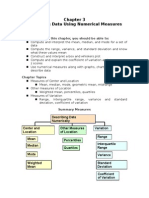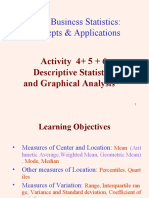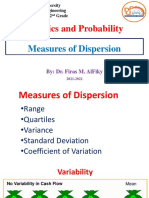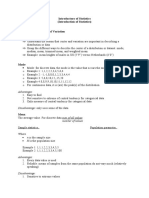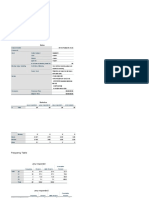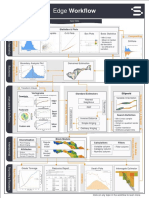0% found this document useful (0 votes)
50 views47 pagesLecture 2b - Describing Data-Numerical
This document provides an overview of quantitative methods for describing data numerically. It discusses measures of central tendency including the mean, median, and mode. It also covers measures of variability such as the range, variance, standard deviation, and coefficient of variation. Additionally, it introduces other descriptive statistics like percentiles, quartiles, weighted means, and box and whisker plots. The goal is to help readers compute and interpret these various statistical measures to quantitatively describe and analyze sets of data.
Uploaded by
George MandaCopyright
© © All Rights Reserved
We take content rights seriously. If you suspect this is your content, claim it here.
Available Formats
Download as PDF, TXT or read online on Scribd
0% found this document useful (0 votes)
50 views47 pagesLecture 2b - Describing Data-Numerical
This document provides an overview of quantitative methods for describing data numerically. It discusses measures of central tendency including the mean, median, and mode. It also covers measures of variability such as the range, variance, standard deviation, and coefficient of variation. Additionally, it introduces other descriptive statistics like percentiles, quartiles, weighted means, and box and whisker plots. The goal is to help readers compute and interpret these various statistical measures to quantitatively describe and analyze sets of data.
Uploaded by
George MandaCopyright
© © All Rights Reserved
We take content rights seriously. If you suspect this is your content, claim it here.
Available Formats
Download as PDF, TXT or read online on Scribd
/ 47
